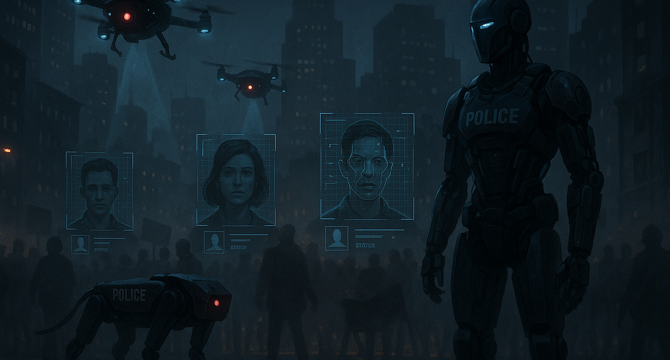Medium
1M
280

Image Credit: Medium
Policing the Future: How AI, Robots, and Surveillance Tech Threaten Civil Liberties
- Artificial intelligence, drones, facial recognition, and surveillance tech are reshaping policing, raising concerns about increased surveillance and reduced accountability.
- Palantir Technologies plays a significant role in predictive policing by analyzing massive datasets, but critics warn of biases and lack of transparency.
- Robotic law enforcers like Boston Dynamics' Spot and Unitree Robotics' dogs are being developed for patrol and riot control, posing concerns about their use in protests.
- Police testing smart glasses with facial recognition software and AR headsets raise worries about privacy and biased scanning, amplifying surveillance concerns.
- Law enforcement's data hoarding and creation of super databases with extensive personal information spark fears of surveillance creep and digital profiling.
- While technology aids emergency responses, the misuse of these tools could lead to repression, tracking dissidents, suppressing protests, and eroding civil liberties.
- To navigate this technological policing future, transparency, oversight, civil rights commitments, clear policies, and data protections are crucial for safeguarding freedom.
- Society faces a critical choice in adopting technologies with caution to prevent a future where efficiency comes at the cost of freedom and dissent.
- The usage of these advanced technologies needs to be accompanied by stringent safeguards to prevent their misuse as tools of surveillance and repression.
- Transparency, oversight, and respect for civil liberties are essential in shaping a future where law enforcement technologies serve safety without compromising individual freedoms.
Read Full Article
16 Likes
For uninterrupted reading, download the app